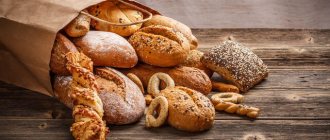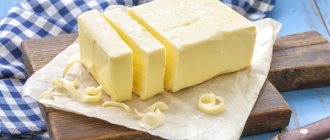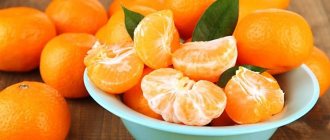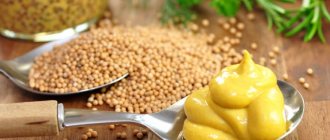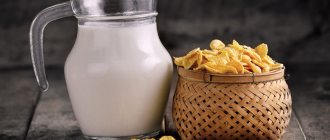What is bran bread made from?
Bread with bran is prepared from the same set of ingredients as regular bread, but the same amount of bran is added along with the amount of wheat flour. Also, vegetable oil, salt, various additives, water, sugar, and yeast are added to the product.
Bran is obtained after grinding flour - this is the hard shell from which grain is cleaned for the production of wheat and other types of flour. Bran is also processed, crushed into large or small pieces and added to the baking of some baked goods, resulting in a product with a large amount of useful substances.
The healthiest bran bread
The range of finished flour products in stores is huge. The most common type is ordinary yeast bread with bran from wheat flour, sometimes with the addition of rye. It has a certain value for the body, but there are more useful and dietary types.
What kind of bran bread is there:
- Wholegrain. This type is especially useful for diabetes, obesity, high cholesterol and cardiovascular diseases.
- Living bread. Baking is prepared using natural starters and may contain wheat sprouts and whole grains. The product is useful for obesity and vitamin deficiency.
- Biobread. Enriched with seeds and nuts, prepared from several types of flour, and distinguished by the use of exclusively natural ingredients. Vegetables are often present in the composition: carrots, pumpkin, tomatoes, celery.
- Bread. They are distinguished by their lightness, low humidity, and long shelf life. When choosing this product, the composition is of great importance and requires careful study. Often you can find unnecessary additives in it in the form of flavor enhancers, salt, and preservatives.
homemade baking
Dry bran can be added to any homemade baked goods. With them you can prepare not only regular bread, but also loaves, buns, pancakes, diet muffins, pancakes. The main advantages of these products will be naturalness, freshness, and fiber concentration. You can calculate the required daily amount, add strictly according to the norm and not worry that the body will not receive enough coarse fibers or will react negatively to an excess.
Video: Recipe for protein-bran diet bread
Composition and calorie content of bread with bran
Bran bread made from wheat flour has a large amount of vitamins, micro and macroelements.
| Quantity per 100 g |
| Calorie content |
| Carbohydrates |
| Alimentary fiber |
Feeding vitamins, macro and microelements, the fresh bran product contains Omega-3 and Omega-6, which affect brain activity, skin condition, and the functioning of the circulatory system.
Composition and energy value
According to GOST 25832-89 on dietary types of bakery products, the usual composition of bran bread should contain:
- 1st grade wheat flour (GOST 26574-85);
- wheat bran (GOST 7169);
- sunflower oil (GOST 1129);
- cow animal oil (GOST 37);
- yeast (GOST 171);
- salt (GOST 13830);
- drinking water (quality is determined according to GOST 2874);
- saccharin (TU 64-6-126-80).
Doctor's bread according to GOST 25832-89 contains:
- premium wheat flour (GOST R 52189-2003);
- wheat bran (GOST 7169);
- drinking water (GOST 2874);
- table salt (GOST 13830);
- yeast (GOST 171);
- butter (GOST 32261-2013);
- sugar (GOST 21-94).
Important! Bread must contain at least 20% bran; if the content is less than this percentage, then the bakery product cannot be called bran. The surface of a quality product should be loose. There is very little crumbling when cutting.
Separately, it is worth highlighting the type of bread “Hercules”, which has a wide variety of components in its composition, and this qualitatively stands out among others.
The composition of Hercules grain bread contains rye flour, oat bran, corn flakes, flax and sunflower seeds, wheat and millet grains . The benefits and harms of oatmeal bread with this set of components increases several times. For example, the content has been increased:
- B vitamins, additionally B4 and B9;
- macro- and microelements: copper, chlorine, potassium, sodium, phosphorus.
What are the benefits of bran bread?
Not everyone likes the taste of the product, or rather, a small number of people, so it is bought only in certain cases: during the treatment of diseases of the digestive system, for weight loss, and rarely because of the taste. For people suffering from diabetes, bran bread helps to slowly lower blood sugar levels and reduce cholesterol.
Benefits of bran bread for digestion
The benefits of bran bread for weight loss
Bran bread, the harm and benefits of which is still a controversial issue among nutritionists: whether it belongs to dietary food products. Naturally, while following a diet, baked goods should be excluded from the diet, but this does not apply to the bran product. The beneficial substances included in its composition help reduce the amount of cholesterol in the blood, accelerate the metabolic process, and accordingly, the natural process of burning fat occurs.
A big plus of consuming such a product is quick satiety, due to the fact that the bran begins to swell in the stomach, maintaining a feeling of fullness.
B vitamins affect the nervous system, helping the body overcome stressful situations and, accordingly, avoid problems. During a diet, the body does not receive enough substances that can negatively affect the condition of the skin, hair, and nails. Bran bread allows you to replenish most of the micro and macroelements that strengthen nails and increase skin elasticity.
Fiber helps regulate the bowel movement process, which promotes weight loss.
Is bran bread ok for pregnant and lactating women?
During pregnancy and breastfeeding, a woman should be selective in choosing foods, primarily rely on her feelings after eating a new food, look at the baby’s reaction and the doctor’s recommendations.
Bran bread is a very healthy product in the diet of an expectant mother or one with a newborn. It has almost no harmful effects on the body, except for individual intolerance. First of all, it contains folic acid and magnesium, which affect the development of the fetal neural tube and accordingly regulate the processes of proper and healthy development of the unborn baby. Most pregnant and nursing mothers are faced with problems such as constipation, bloating, and flatulence, without having any medication to eliminate this problem, and bread with bran allows you to solve this problem gently and painlessly.
The amount of iron contained in the bran product is 17% of the daily value, which improves blood composition and increases hemoglobin, which is often below normal in pregnant women. Omega-3 and Omega-6, as well as lutein, affect visual acuity, increase attention and improve memory.
Is bran bread good for children?
Children under three years of age are not recommended to be given bran bread, as it can bring less benefit than harm: it increases intestinal motility, which will affect the bowel movement process. The stool will become liquid, which may release beneficial substances and microorganisms, which can cause dehydration. Children over three years old can add bran to their diet, but not more than 50 g per day. For schoolchildren, many experts recommend eating bread with bran, as it helps improve memory, increases concentration, increases physical endurance, and strengthens the immune system.
Composition and benefits of bran
Active promotion of eating bran bread instead of the usual white bread began about 20 years ago. The change in society's attitude towards bran was supported by a detailed study of the beneficial properties of the product. Bran is a source of substances necessary for the full functioning of the human body:
- Cellulose . It is a component of many vegetables and fruits and is an important component of waste from the flour milling process. It is vital for the intestines to maintain high-quality microflora; it plays the role of a “sponge” that cleanses the digestive organs of toxins and stagnant feces. Eating fiber causes a feeling of fullness, which allows you to effectively use the product for weight loss. It has been observed that foods high in fiber reduce high levels of sugar and cholesterol in human blood, which prevents the occurrence and development of atherosclerosis.
- B vitamins. Normalize the functioning of the nervous system, help cope with stress and mood swings.
- Vitamin E. Maintains healthy skin thanks to natural antioxidant properties.
- Minerals. Potassium and magnesium have a beneficial effect on the functioning of the cardiovascular system, selenium and phosphorus strengthen the immune system, potassium and sodium protect the walls of blood vessels. The vitamin and mineral composition of bran is able to provide the human body with the missing elements that promote good health.
- Lipomic acid . Controls the functioning of all vital systems of the body.
- Zinc. An indispensable assistant for normal brain function.
- Ascorbic acid.
The first bread was made 15,000 years ago. In the Middle Ages, bread products were considered by Europeans to be a noble “royal food”, despite its consumption by all classes of society.
The unique components of bran bread bring it to a leading position on the scale of usefulness among all types of bread products.
The amount of useful substances in the shell of buckwheat, wheat or oats is much greater than in the kernel
Rules for eating bran bread
Bran bread should be consumed as an addition to the main dish, at any time of the day, but remember that it can cause diarrhea. Introduce into the diet with caution if you have chronic gastrointestinal diseases.
If you previously did not have products containing bran in your diet, you need to start with a small piece and observe the body’s reaction, gradually increasing the dosage.
The best combination of bran bread with fermented milk products, which help absorb more nutrients, is especially useful to eat bran bread with cheese and butter in the morning, such a breakfast will energize and saturate the body for a long time.
Mothers who have given birth and are breastfeeding should stop using it in the first month, because it will affect the formation of stool in the baby.
Rules of use
Experts advise taking into account some nuances if you intend to introduce bran bread into your diet. The harm and benefits of a product depend not only on its composition, but also on its correct use.
- In case of intestinal problems, when frequent constipation becomes an abnormal norm of life, you should eat two or three pieces of bread with bran every day. Also, for the prevention or treatment of hemorrhoids and constipation, a couple of slices of bran bread are recommended for pregnant women.
- While on a diet, one or two small pieces are allowed. The less fluffy the flour product is, the more coarse healthy fibers it contains. Small slices (10-20 g) will quickly remove the feeling of hunger and saturate the body for a long time. Bran bread is considered a more “profitable” snack than a banana or nuts.
- Just one piece of bran bread eaten for breakfast will help cleanse the intestines, as well as get rid of skin problems (acne, rashes). In the evening, of course, it is better to refuse any type of baked goods.
- Never eat bran bread if it is moldy, poorly baked, or expired. There is no point in buying bread for future use.
- Yesterday's bread is considered much healthier than fresh crumb.
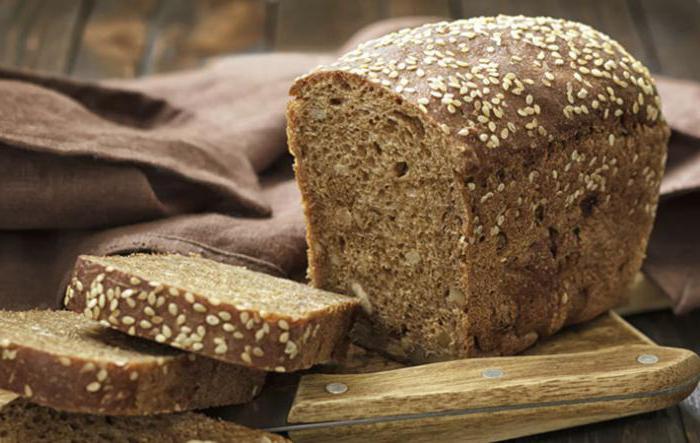
View gallery
How much bran bread can you eat per day?
The best bread for consumption should contain at least 20% bran.
- For children from 3 to 7 years old, the daily dose should not exceed 50-70 g.
- For an adult up to 300 gr. per day, with 30-100 g per dose.
- For those who are on a diet – 2-3 pieces per day, 40-100 g.
- Lactating women and pregnant women up to 150 g per day.
When using it, you should be attentive to your body, noticing the effect on the state of the body. Many manufacturers add various food additives to the product, which, in combination with other products, can cause an allergic reaction.
How to bake bran bread at home
For cooking you will need coarse flour (wheat, oatmeal, rye).
- Vegetable oil (added to the dough and greased the mold).
- Dry yeast).
- Salt.
- Sugar.
- Soda.
- Water.
- Any additives (seeds, raisins, spices).
Instead of wholemeal flour, you can buy regular wheat flour and bran.
Bran bread recipe in the oven
To prepare bran bread in the oven you will need:
- 320 g wheat flour;
- 100 g bran;
- 30 g vegetable or olive oil;
- 8 g dry yeast;
- 30 g sugar;
- 15 g salt;
- 10 g soda;
- 250 ml water.
- Dissolve sugar and yeast in a deep container (in warm water).
- Add salt, soda, seeds or spices to the water.
- Add flour into the resulting mixture in small portions to prevent lumps from forming.
- Knead thoroughly with a spoon, add bran and vegetable oil.
- After that, take the dough out onto the table and knead it, but so that it is not “clogged” or too soft, sticking to the table and hands.
- Transfer the dough into a container, cover with a towel, and leave in a warm place for 2 hours. During this time, it should double in size, after which, lightly mash it again and put it in the mold.
Depending on the type of oven, you should select a temperature range from 180 to 200 degrees. It will bake for 40-60 minutes. Readiness must be checked using a wooden stick. After cooking, do not immediately remove the product from the oven: leave it for 10-15 minutes with the oven open and turned off to cool.
Recipe for bran bread in a bread machine
To prepare bran bread in a bread machine you will need:
- 2.7 tbsp. wheat flour;
- 1.8 tbsp. bran;
- 1.5 tbsp. boiled warm water;
- 4 dec. l. vegetable or olive oil;
- 0.8 dec. l. dry yeast;
- 2 dec. l. Sahara;
- 0.5 dec. l. salt;
The cooking process takes place in several stages.
- Prepare a bread maker container.
- Add yeast, flour and bran, add salt, sugar, butter.
- Water pours in in a thin stream.
- The container is installed in the bread machine, after which you need to set the baking mode for rye bread.
Healthy bran bread will be ready in 3.5 hours.
What is the difference between bran bread and whole grain bread?
A distinction should be made between bread with added bran and whole grain bread. Often in stores, sellers confuse them and write whole grain on the labels of bran bread. It is not the same.
- Whole grain bread is baked from so-called wallpaper flour, which is obtained “using ancestral technology” - from ground whole grains.
- Bran bread is bread made from refined flour, in which bran has already been added to the dough at the factory. Moreover, several times more than they were contained before grinding.
What is the difference between refined flour and wallpaper?
The grain itself consists of endosperm, germ and shells. Everything that is of nutritional value - vitamins, minerals, healthy fatty acids, dietary fiber - is contained in the germ and shells of the grain. Endosperm is mainly starch and gluten proteins (14%).
Once upon a time, our ancestors ground whole grains in stone millstones and obtained whole grain flour, from which they then baked bread. But such flour quickly deteriorated - the fatty acids went rancid, and enterprising descendants learned to separate the germ with the shells, leaving only the endosperm for industrial baking production.
Refined flour can be stored for years, has a snow-white, appetizing color, however, alas, it contains only starch (80%) and gluten (14%), and is practically devoid of vitamins and other useful substances.
What is bran bread made from?
To expand the range and meet the tastes of customers like you and me, the manufacturer uses part of the regular flour for “healthy” bread. Bran is added to purified flour before baking - the same germs and shells that were separated during grinding.
In fact, it is waste from modern flour milling, which is thus added to the finished product.
Roughly speaking, 80% of all flour goes to loaves, and 20% to healthy bran bread. In terms of its qualities, it, of course, compares favorably with the usual one. But it should not be confused with whole grain.
Whole grain bread can really only be bought from private traders. A large manufacturer will not bother with its baked goods.
Nutritional value of bran bread and regular bread
| Regular white bread | Bran bread | |
| Macronutrients and fiber content | ||
| Calories per 100 g | ||
| Total carbohydrates: | ||
| of which fiber | 4 g (20%) | |
| Sodium (salt) | ||
| Vitamins/microelements | ||
| 81.0 mg (20%) | ||
| Manganese | 1.7 mg (83%) | |
| 17.3 mcg (25%) | 31.0 mcg (44%) | |
It is easy to notice that there is at least 2 times more fiber in bread with bran. Sometimes such bread consists of a third of bran, which of course pleases. There is less salt in bread with bran, which means that the body will retain less water.
For 100 g of wheat bran there are 40 g of fiber, that is, dietary fiber. They are not digested, but the intestinal microflora uses them for food, synthesizing amino acids and vitamins in gratitude to the body.
The body needs about 20-25 g of fiber per day, and bran bread is an important source.
Oat bran - calorie content and composition
This valuable food product has a biochemical composition that is beneficial for weight loss. In terms of overall content, carbohydrates are in first place among nutrients (50 g/100 g), proteins are in second place (13.7 g), and fats are in third place (7 g). A distinctive feature of bran is its high amount of fiber - in every 100 g it accounts for 15.4 g.
Cream cheese, cream and butter are not healthy dairy products and should be consumed in moderation. Cereal products are made from wheat, rice, oats, cornmeal, barley or other grains such as millet, bulgur and amaranth. Products made from grains include.
There are 2 types of grains: whole grains and refined grains. Choose mostly whole grains. They are much better for you because they contain whole grains and more protein and fiber than refined grains. Bread and pasta made from whole wheat flour Bulgur amaranth and other grains Avenya Corn popcorn Whole wheat. Check the ingredient list and buy breads and pastas that have "whole grain" or "whole wheat" as the main ingredient.
The usefulness of the product is also explained by a considerable number of biologically active compounds, from which vitamins B1, B2, B5, B6, E, K, PP, choline are isolated, as well as available forms of calcium, potassium, magnesium, iron, manganese, selenium, zinc and others. macro- and microelements.
Taking oat bran is especially important for people who have chosen a vegetarian diet. In addition to non-essential amino acids, this product also contains essential ones (arginine, lysine, histidine, valine, methionine and others). This is especially important when refusing meat foods.
The refined grains have been modified to make them last longer. They also have a finer texture. Refined grains include white flour, white rice or degummed cornmeal. Eat less foods that typically have refined grains, such as white flour and pasta. Foods with added bran, such as oat bran or oat bran, are a good source of fiber. Just remember that they cannot be whole foods.
Monounsaturated and polyunsaturated fats. These are the healthiest types of fat. Many healthy oils come from plants, nuts, olives or fish. These are liquids at room temperature. Healthy choices include. Saturated fats. These are fats found mainly in animal products such as butter and shortening. They are also found in coconut oil. Saturated fats are solid at room temperature. Your best bet is to try to reduce saturated fat in your diet.
Oat bran has a small calorie content - only 110 kcal/100 g. If you consider that it is recommended to eat only a few tablespoons per day (from two to four), then the total calorie content is low. One large spoon holds approximately 10-15 g of bran.
The benefits of bran bread for weight loss
- Bran bread helps control appetite.
The glycemic index of such bread is significantly lower than that of regular bread (45 versus 85), which means that sugar will rise and fall gradually. After eating refined carbohydrate foods (including regular white bread), you will soon want to eat again. After you eat bread with bran, this will not happen. In addition, by swelling and increasing in volume, fiber stretches the intestinal walls, thereby creating a feeling of fullness. - The fiber contained in bran is necessary for normal digestion. Beneficial substances from other products are absorbed more actively and completely. Fiber also helps beneficial microflora synthesize substances the body needs - amino acids, vitamins. All this allows you to be content with smaller amounts of food.
- Bran cleanses the body. The “lazy bowel” syndrome is familiar to many people, but for obvious reasons such a delicate problem is not talked about.
When consuming bran, the intestines work without interruption, and thus our well-being and health improve. Working out in the gym is much more enjoyable and productive when your body is not bothered.In addition, bran is good at absorbing all sorts of nasty things - alcohol, dyes, flavors, preservatives, pesticides and herbicides. The bran binds them and removes them from the body naturally.
- Bran contains essential fatty acids (omega-3). Our body cannot synthesize them, so we must get mega healthy omega-3s from food.
- Bread with bran is rich in B vitamins, which are extremely beneficial for the nervous system, which in girls can be extremely unstable. And if you’re also on a diet, then you definitely can’t do without these vitamins. In addition, B vitamins improve the condition of skin, hair and nails.
- Bran contains a lot of magnesium. Magnesium calms the nervous system and helps the heart function well. When there is not enough of it, wounds heal poorly and many processes in the body are disrupted. This is a very important mineral for women.
- Such bread is incomparably richer in manganese and selenium. Just so you know, selenium is an important antioxidant, and manganese is needed for good hair growth, hematopoiesis and the synthesis of female sex hormones.
- Due to its high content of carbohydrates, B vitamins and magnesium, it helps absorb the amino acid tryptophan. From it the body then produces serotonin. Serotonin is the “happiness hormone”. When there is not enough of it, our mood begins to deteriorate from any little thing, and we rush to cakes, sweets and other harmful things.
Benefits for the stomach and intestines
It has been proven that bread with bran helps normalize the functioning of the stomach and intestines. When wheat husk processed into flour enters the body, it swells and creates a feeling of fullness. A small piece of bran bread is both healthier and more filling than the same slice cut from a baguette or white bread.
Experts say that the main task of bread with bran is to cleanse the intestines. In addition, the product helps reduce appetite. Eating bran helps fight peptic ulcers and digestive problems. The substances that make up such bread help the body absorb starch more slowly, thereby reducing the glycemic index.
What and when to eat bran bread for weight loss?
You can eat up to 100 g of bread (250 kcal) per day. It is best to put a piece of cheese, fish, lean boiled meat, slices of vegetables on the bread, spread cottage cheese on top, and sprinkle with herbs.
A piece of bran bread with low-fat cottage cheese before training will charge you with energy and help the body break down fat more actively, while you will feel full of energy.
It is advisable to eat bread in the first half of the day, since it still contains too many carbohydrates for dinner and evening meals. And for breakfast and afternoon snack, you can safely eat the “right” sandwich and lose weight.
In the Middle Ages in Rus', bran baking was considered the prerogative of the poor population; the merchant classes preferred to eat white bread made from premium flour, mistakenly believing that it retained all the nutrients. With the development of civilization, this opinion has changed radically, thanks to numerous laboratory studies by scientists.
During such experiments, it turned out that the benefits of bran bread are due to the vitamin and mineral complex. Doctors strongly advise including 30 grams in the daily menu. this product and completely abandon white flour products, which bring complete harm to the body.
Calorie content
Skilled bakers have developed more than 20 types of bran bread, which differ slightly in the basic composition and additional additions in the form of seeds and dried fruits. There are a large number of different recipes for preparing bakery products at home. With the right equipment, you can enjoy fresh homemade bread every day for a healthy meal. This method is ideal for people who are distrustful of store-bought products, but want to experience the beneficial properties of bran for themselves.
An important point to consider when choosing bread or baking yourself is the percentage of bran to other ingredients. Some manufacturers pass off wheat bread sprinkled with bran flakes as natural bran products. This is incorrect, since bran should be contained in the dough itself, in a qualitative proportion of 30%. During the baking process, the beneficial properties of the constituent substances are not destroyed.
Bran bread belongs to the category of dietary products despite its fairly high calorie content - 248 kilocalories per 100 grams of the finished product. These calories are not capable of causing significant harm to the figure, since the product contains a large amount of fiber, which determines the energy value in bran bread. The body spends active resources on the breakdown of complex carbohydrates, which allows you to stay full longer and even lose weight. Abuse is not recommended, because in addition to bran, bread contains regular flour, which can add extra centimeters to the waist and a couple of unnecessary marks on the scales.
The officers of the tsarist military unit suffered from a lack of good immunity, while ordinary soldiers had excellent health. A special commission was even created to investigate this case. It turned out that the officers ate exclusively white bread made from refined flour, and the privates ate bran bread made from wholemeal flour. As a result, the officers' diet was revised.
Thanks to its balanced vitamin and mineral complex, bran bread is always recommended for inclusion in the dietary and therapeutic menu. Replacing regular wheat bread with bran bread has a beneficial effect on the functioning of all body systems and the general condition of a person. There is no age limit for eating bran bread, given reasonable portions.
Today, more than 20 types of bran bread are known.
What is valuable in grain waste?
Looking at the encyclopedia, we will glean a lot of interesting information about bran. When grinding flour, the shells of grains with germs are considered to be production waste, which is used as cattle feed. But the situation changed dramatically in the last century, when scientists were able to prove the presence of valuable dietary fiber, fiber and fatty acids in this raw material.
Bran from any grain is better absorbed by the body, does not linger in the stomach and is not stored in reserve, as nutritionists say. This is probably why people on low-calorie diets and vegetarians love to eat them. Yes, baked goods made using the fine grinding method are definitely a loser.
Benefits for weight loss
Bran bread, the harms and benefits of which we are discussing today, is a healthy dietary baked product. Many people think that on a diet they should completely abstain from eating flour products. Of course, it’s worth quickly walking past the shelves in the store with aromatic loaves, pastries, cakes, rolls and crispy French baguettes. But it is recommended to linger near the shelf where the bran bread is.
White bread or a loaf contains simple carbohydrates, which do nothing but harm our figure. Another thing is bran bread. It contains complex carbohydrates that will not be stored in problem areas. They are processed by the body for a very long time, eventually turning into useful energy. Consequently, bread with bran is not only not harmful to the figure, but even promotes rapid fat burning.
Why is bran bread so beneficial?
In order for baked goods to have a positive effect on the human gastrointestinal tract, it must contain the correct amount of hard grain shells. During production, technologists accurately calculate the dosage of this raw material: exceeding the norm of bran makes the product difficult for the stomach and difficult to digest. Content of valuable organic compounds:
- Cobalamin or vitamin B12 is responsible for the activity of the central nervous system and liver. Promotes rapid regeneration of the epidermis and tissues, and also controls cholesterol levels in blood vessels.
- Pyridoxine (vitamin B6) plays an important role in our body. Without it, normal functioning of lipid and metabolic processes is impossible. The task of pyridoxine is to maintain muscle tone and supply glucose and hemoglobin.
The benefits of bran bread do not end there. Flour products made from unrefined grains are enriched with other equally valuable components: ascorbic and citric acids, D, PP and a whole range of chemical elements.
If you get along with bran, you will improve your health
And this is not a myth, but pure truth, supported by scientific facts. By including such a product in your diet, you are ensured normal functioning of the intestinal tract. You can forever forget about gastrointestinal disorders, constipation and colic. However, overusing the product is also harmful, especially for people prone to flatulence.
What else is useful for bran bread? It is recommended to use if you have a weak immune system, especially during the cold season. You can not only supply the body with the missing substances, but also strengthen nerve endings, memory, and improve the condition of epithelial tissue and nails.
The products have been proven to lower plasma sugar, clear plaque from blood vessels and activate brain processes. How do you like this? The amazing is always nearby and this directly concerns our nutrition. Poor quality and unhealthy food wears out the “engine” – our heart. Whole grain baked goods are a preventive product against heart attack and hypertension.
Bran is indispensable for weight loss, especially oat and wheat bran. Once in the stomach, they swell, thanks to plant fibers, filling all the space, thereby ensuring quick and long-lasting satiety. For about 3-4 hours a person does not feel hungry and, accordingly, the need for constant snacks disappears.
In addition, the intestines are naturally cleansed of harmful toxins and heavy metals. Traditional healers have long used bran in the fight against various physical ailments. They are brewed, added to prepared dishes and soaked - used for gout, respiratory diseases and other pathologies.
Who can eat bran bread? Are there any restrictions?
You can list and retell the medicinal properties of flour products without interruption. One thing is clear: whole grain baking activates important processes in internal organs and helps maintain health. We list who needs to use the product for its intended purpose:
... Bran is the outer shell of the grain, its husk.
The benefits of bread with bran The healthiest bread is the one in which the bran content reaches 30 percent or more. Bran bread quickly fills the stomach and makes us feel full. Paradox! Although such bread is extremely valuable for the body, it, alas, is not in mass demand for one simple reason - it is not as tasty as, for example, white bread. We, as always, step on the same rake - in pursuit of taste sensations we forget about our health! Bran has a cleansing effect on the body, lowers blood sugar levels, and in addition, contains nicotinic acid, which has a preventive and therapeutic effect on blood vessels and the gastrointestinal tract, so this bread is useful for a number of diseases.
Bran bread is useful for: . prevention and treatment of atherosclerosis (contains B vitamins); . cleansing the body of mucus, waste and toxins; . increased blood sugar levels (due to the nicotinic acid it contains); . obesity (it is low-calorie); . coronary heart disease and other cardiovascular diseases (B vitamins); . bronchial asthma and other respiratory diseases; . hepatitis (contains vitamin B1); . cholelithiasis; . urolithiasis; . chronic constipation (has a mild laxative effect); . diabetes mellitus (it is low in carbohydrates, but high in B vitamins and vitamin PP); . metabolic diseases. By the way, bran can be added not only to bread, but also to cereals, soups, fish and meat dishes - this will only increase the nutritional value of these dishes! You can also prepare a decoction from bran - by frying it in the oven and pouring boiling water over it, this decoction is a natural healing vitamin cocktail. Harm of whole grain bread The sharp edges of bran can damage the delicate mucous membrane of the stomach and intestines, so in some diseases such bread can be harmful. Bread with bran is contraindicated for: . hemorrhoids; . colitis; . stomach ulcers; . exacerbations of gastric diseases.
... Some useful tips on how to choose and eat bread correctly. . When purchasing this or that type of bread, pay attention to the fact that it is smooth, has no cracks and has a natural color. . There should be no black soot on the bread, which contains a huge amount of carcinogens. . Take the time to find out the deadline for sale, composition and manufacturer of the bread. . If you bought poor quality bread, try not to purchase bread from this manufacturer in the future. . Do not eat bread that is moldy, has an unpleasant odor, or is poorly baked. . Don't buy bread for future use. . The crust of bread is much healthier than its crumb. . Do not eat white bread with fatty foods (lard, fish, seafood, broths), giving preference to black bread in such cases. . It is better to eat potatoes and meat without bread at all. . Vegetables and vegetable dishes go well with any bread. . Yesterday's stale bread is healthier than today's warm and fresh bread.
Is this product useful for everyone?
Despite the high level of benefits for the body, bran bread has a number of contraindications.
First of all, this applies to people who have abnormalities in the gastrointestinal tract.
Diseases for which it is prohibited to eat bran bread:
- pancreatitis,
- haemorrhoids,
- colitis,
- gastritis,
- various types of ulcers.
Bran has a hard and coarse structure, which can damage the unhealthy organ and aggravate the course of the disease. If the listed diagnoses have ever been made before, then before consuming products containing bran, you should consult a doctor.
Bran bread cannot be put on a par with baked goods made from wheat bread and baked goods, since its beneficial properties are much higher. It is the grain shell that retains the maximum amount of dietary fiber. Bran culinary products are not as tasty and fluffy, but their importance for the body is measured by health. Eating bran bread is a healthy habit that can help the body cope with stress safely and maintain beauty. The product is recommended for people of all ages, children and pregnant women as an auxiliary ingredient in a rational menu. The vitamin and mineral complex of the product is amazing, but you should not perceive bran as a panacea and a cure for all ailments. It is more rational to consider bran products as an additional component of proper nutrition on the path to a healthy lifestyle.
If you have any difficulties or problems, you can contact a certified specialist who will definitely help!
Nutritional value and composition of bran bread
Bread with bran contains a number of vitamins: B1, B6, D, B12, E, PP, ascorbic acid, a whole complex of chemical elements, including iron and zinc, as well as fiber.
100g of bran bread contains:
- Proteins – 7.5.
- Fats – 1.3.
- Carbohydrates – 45.2.
- Kcal – 227.
The caloric content of bread with bran is not so low, but this bakery product belongs to dietary foods. And thanks to its rich mineral complex, it is often included in the menu of medical nutrition in sanatoriums and dispensaries.
Bread with bran is considered to be one in which the bran is present in the dough itself, and not just sprinkled on top. The healthiest bread with bran is the one that contains 30% bran. All the benefits that are found in bran are contained in bread, since heat treatment in no way affects the valuable substances of the grain shells.
Useful qualities of bread with bran and contraindications for use
Eating bread with bran helps normalize the functioning of the nervous system, brain, liver, vascular system and digestive system.
Eating this bread perfectly satisfies hunger and saturates the body, as a result of which you don’t feel like eating for a long time.
Bread with bran is often included in the diet of people with gastrointestinal, cardiovascular and liver diseases.
This bakery product is enriched with lipoic acid, which is contained in bran. This acid is often called a corrector for the human body system. This type of bread can be an excellent alternative to wheat bread, since bread with bran is difficult to overestimate.
An important component of bran is fiber, the use of which promotes digestion and is a sorbent that removes toxins from the intestines.
Attention!
Bran bread should not be consumed for gastritis during exacerbations, for duodenal ulcers, colitis, hemorrhoids and pancreatitis. In any case, if you have the above diseases, consult your doctor before consuming this baked product.
Bran bread for weight loss. Many diets include fasting days with green tea, a salad and two pieces of bran bread on toast. This is quite natural, because bread with bran gives an excellent feeling of fullness: you forget about hunger, and the diet is easier to tolerate.
Making bran bread at home
Homemade bread, unlike store-bought bread, is a guarantee to feed your household with bread without dyes, emulsifiers and taste improvers, and if it is bread with bran, you will also get a very healthy bakery product.
Ingredients:
- Premium wheat flour – 500g.
- Wheat bran – 100g.
- Fresh compressed yeast – 5g.
- Salt – 8g.
- Granulated sugar – 30g.
- Butter – 15g.
- Drinking water – 330ml.
Preparation:
- Dissolve yeast and 250g flour in 250ml warm water in a bowl. Stir, cover with cling film and let rise for 2.5 hours. This is a dough that should increase in volume and be bubbly.
- Next, add salt, sugar, butter, remaining water, bran to the dough, mix and knead the dough.
- Place the dough in a bowl, cover with film and let rise. The dough should double in size.
- Divide the finished dough into 4 parts and form balls. Grease a baking tray with oil, place the balls at some distance from one another and leave to rise for an hour.
- When the products have doubled in size, carefully make transverse cuts with a sharp knife.
- Place the bread in an oven heated to 220ºC for 10 minutes, then reduce the temperature to 180ºC and bake until fully cooked.
- Sprinkle the finished bread with cold water, place it on a wire rack and wrap it in a towel. After 4 hours, the bread is fragrant and tasty and can be eaten!
Smart people understand that health directly depends on the quality of food they eat. Adherents of proper nutrition prefer dietary meat to fast food, fresh fruit to sweet pastries, and a type of coarse grind with the addition of bran to white bread.

